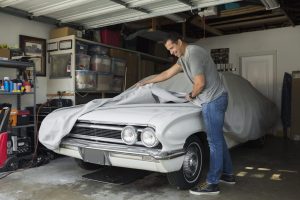 If the inside cabin of your vehicle smells like gasoline, it could be a sign that there may be more significant problems, and you should address them as soon as possible. While the smell of gas fumes on occasion isn’t as alarming, a strong odor from inside the vehicle should be investigated right away.
If the inside cabin of your vehicle smells like gasoline, it could be a sign that there may be more significant problems, and you should address them as soon as possible. While the smell of gas fumes on occasion isn’t as alarming, a strong odor from inside the vehicle should be investigated right away.
In this article, we will discuss potential reasons why the inside of your car smells like gas, such as possible fuel or exhaust leaks, a malfunctioning gas cap a failed pressure regulator, and more.
Fuel Leaks
If the smell of gasoline seems to be coming from the engine compartment, this could be a sign that there’s a leak in the fuel system. It is very important to have this checked out right away, as a leak in the fuel system could cause a fire under the hood.
Exhaust Leak
In contrast, if the gasoline smell seems to be coming from the car’s exhaust, this could be a sign of an exhaust leak. One of the main functions of a car’s exhaust system is to ensure drivers aren’t breathing in exhaust fumes. If you begin smelling gas fumes at the front of the vehicle near the engine or inside the cabin, the car’s exhaust system should be checked out.
Malfunctioning Fuel Cap or EVAP system
There is also a chance the gas smell in your car cabin is because of a faulty gas cap or EVAP (emissions) system. If your vehicle’s gas cap isn’t sealing correctly or is loose, damaged, or missing, gasoline fumes may escape through the fuel filler. Modern cars are also designed with EVAP systems to capture these gas fumes, so if that’s malfunctioning, it could be the source of the gas odor.
Failed Pressure Regulator
A failed pressure regulator may also leave your car with a gas smell. If the regulator is not working correctly, the vehicle’s fuel mixture may be off, causing an abundance of fuel to be present in the system. This will cause the car to run “rich”, which could produce a strong odor of gas in the passenger cabin.
Car-X is Your One Stop Auto Repair Solution!
Car-X has been providing quality, reliable automotive service since 1971. Proper maintenance and service of your vehicle can make a big difference in its ability to provide you with many miles of trouble free driving.
Call the Car-X Man or schedule an appointment for your vehicle, and we can help repair the issues related to what is causing your car to smell like gas—keeping you safe and your vehicle functioning properly.




